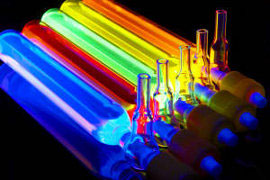On July 5th, 2011, the University of East Anglia (Norwich, U.K.) announced research to use solar energy to create fuels and feedstock chemicals, working with the Universities of Manchester (Manchester, U.K.), York (York, U.K.), and Nottingham (Nottingham, U.K.).
Professor Wendy Flavell of the University of Manchester’s Photon Science Institute and her colleagues are working with quantum dot technology to create these fuels, including hydrogen and liquid methanol.

“Creating catalytic devices which harvest light energy using quantum dots, or photovoltaic materials to drive the formation of synthetic fuels from water or carbon dioxide can be viewed as artificial photosynthesis,” states UEA School of Chemistry Professor Chris Pickett.
“Globally, chemists, physicists and materials scientists are coming together to work on artificial photosynthesis to get to a stage where we can viably make clean, green fuels.”
Researchers display solar production of hydrogen fuel
The process being explored by the researchers uses sunlight to create carriers of electric current, which create the fuels with catalyst molecules grafted onto the surface of the dots.
The scientists presented their research at the Royal Society’s annual Summer Science Exhibition, which opened on July 5th, 2011.
At the exhibition, viewers were given an opportunity to see the quantum dots at work, and how by changing the size of the dots the color of light absorbed changes. The researchers also presented a solar cell that produces hydrogen directly from the electricity generated.
 Follow
Follow